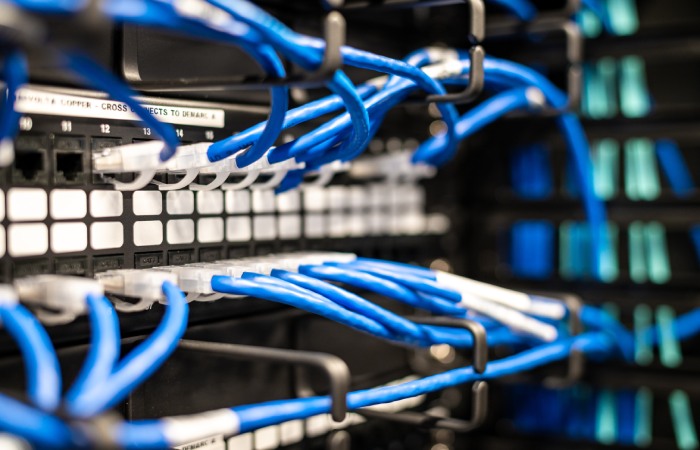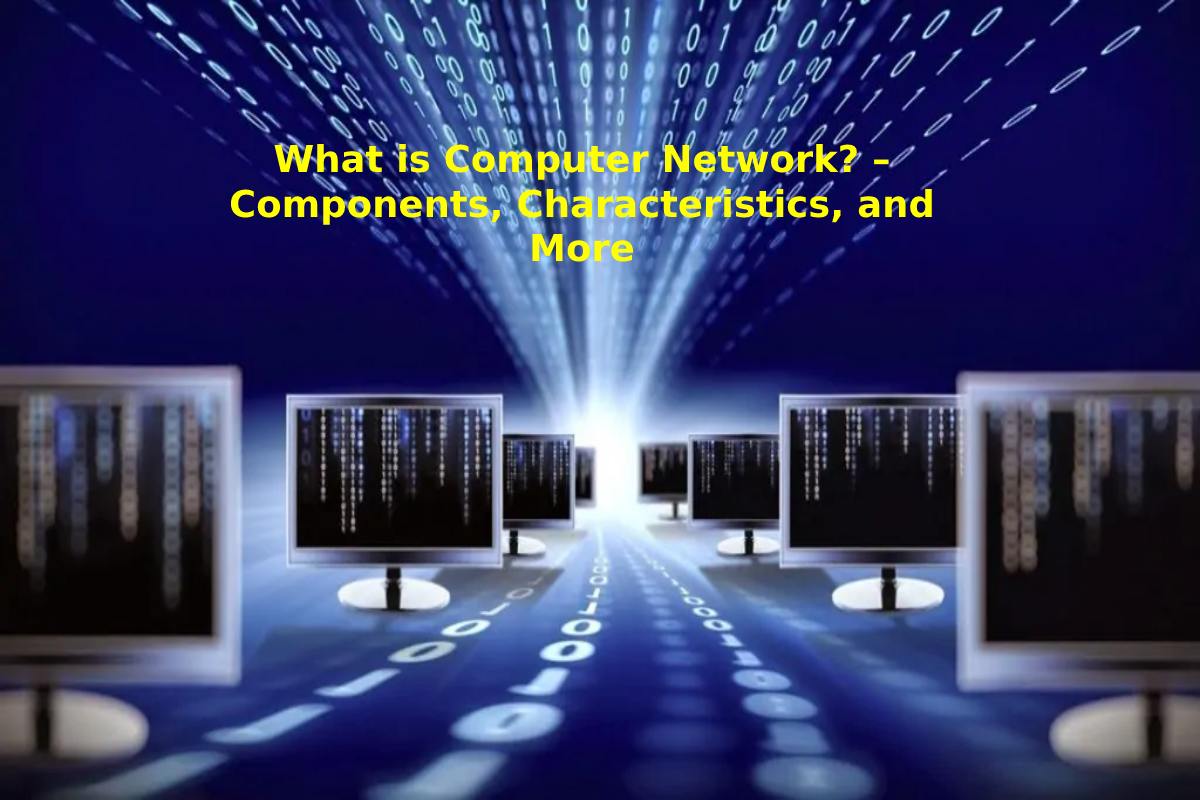A computer network is a system of a series of computers interconnected using a medium (physical or wireless) to use resources in a shared way and exchange files or any information.
Every computer network has equipment that performs certain functions. In this sense, there must always be a sender, a receiver, a medium and a message. Under this principle, computers and other electronic devices can be connect locally (LAN connection) or massively (Internet), so computer networks are essential for continuous processes.
Table of Contents
Components of Computer Network
The data exchange process within a computer network requires the participation of certain components or elements that play a specific role. Here are what they are:
Servers
These are computers responsible for processing the entire flow of information transmitted through a network. Servers also function as the control center of a computer network since, from these devices, it is possible to regulate or control the file traffic that the web allows.
Customers
These are the different computers connected to the computer network that users use to use it. These computers only have access to it but do not have control functions as in the case of servers.
Means, Medium
These are the resources use to carry out the transmission of information. It can be a wired or wireless network, depending on the case, but in general, its function is none other than to connect the nodes (clients and servers) and serve as a data exchange channel.
Hardware
It is the term use to refer to the different physical components that make up a computer network. From the modems and network cards to the antennas and telecommunication elements that make the effective operation of the network possible.
Software
Understands the protocols and logical instructions that network hardware uses to function correctly. This item considers the Network Operating System (NOS) and also the standard communication protocol (TCP/IP).
Characteristics of Computer Network
- Wired media (fiber optics, coaxial cabling, etc.) and wireless media (radio waves, microwaves, etc.) allow interconnection between devices.
- The NOS or Network Operating System dictates the instructions that allow each computer within a network to “communicate” with another.
- It can use to exchange files, share software and hardware, send internal emails (only between members of a personal or local network) and external emails Internet, and endless other uses.
- It has pieces of hardware dedicated to allowing the system’s operation: antennas, network cards, routers, cabling, etc.
Types of Computer Network
There are multiple ways to classify computer networks; however, one of the most common ways is to refer to the types of existing networks based on their scope or size.
PAN or Personal Area Network
PAN ( Personal Area Network ) refers to small networks for personal use that generally connects devices used within a home. That is personal computers and mobile phones.
LAN or Local Area Network

A LAN connection ( Local Area Network ) is a small network limited to interconnecting computers within a specific area. Offices, classrooms, cyber cafes, etc. LAN connections are characterize by not having communication with public networks.
MAN or Metropolitan Area Network
The MAN network ( Metropolitan Area Network ) connects larger spaces than a LAN connection. This case applies to areas such as squares, university areas, companies, and others.
GAN or Global Area Network
The type of network GAN ( Global Area Network ) is a network with global coverage; it allows the transmission of information remotely through satellites and also telecommunications stations. Therefore the GPS network is one of the examples of par excellence.
SAN or Storage Area Network
A SAN network ( Storage Area Network ) is, as its name indicates, a network-oriented to data storage. Specifically, these are networks made up of servers, hard drives, physical storage devices, and low-level hardware.
WAN or Wide Area Network
The WAN ( Wide Area Network ) refers to large-scale computer networks and an entire infrastructure system designed to connect the clients and also servers that comprise it. In this group, we can consider the presence of the Internet or satellites.
Connection Ways of Computer Network
Depending on the form of connection that integrates the devices of a network, there are different media with unique characteristics. The following are the types of physical relationships use by computer networks:
Wired Connections
These are wired connections that use physical wiring to connect the devices that make up a network. In this sense, the main ones are:
- Fiber optics: This is the wiring that allows a better speed of data flow. It can reach speeds of up to 600 Gbps. Optical fiber can based on small-fiber strands covered with a thin insulating layer. Light pulses can be emitted through this fiber (usually glass) at a high frequency.
- Coaxial cable: This medium generally uses a copper core covered with insulating material. There is a dielectric mesh network on the surface of this material that minimizes the interference produced by any external medium. It is one of the cheapest alternatives.
- Twisted pair: This is a twisted cable that reduces interference with the external environment.
Wireless Networks
- Infrared: It is a type of connection in disuse. It allows p2p communication between computers located at a short distance.
- Microwave: This transmission medium uses low-frequency waves (microwaves) that can reach 600 Mbps.
- Radio waves: Radiofrequency is generally use to transmit information between stations. As its name indicates, it is based on modulated radio waves.
Advantages and Disadvantages of Computer Network
Thanks to the appearance of computer networks on all scales, many aspects of human life have been favor. However, just as there are great benefits arising from these systems, there are also risks or disadvantages that must be consider.
Advantages
- It allows sharing of resources between computers, which can help store files on other devices or in the cloud.
- Small networks make it possible to exchange files at high speed and more efficiently than other means.
- It allows remote control, so it can be of great help to receive technical support.
- It is a valuable resource for business organizations and office groups, as it facilitates communication between users.
- Enables sharing of hardware items such as printers.
- Thanks to computer networks, people can use the Internet.
- Computer networks such as the SAN network allow exploration to be carried out through satellites.
Disadvantages
- A computer connected to a computer network can be expose to different threats such as viruses, hackers or information theft.
- Large computer networks need regular maintenance.
- A network cannot operate without a server, so the network will stop working if the server is damage.
- The performance of a computer network depends on the servers’ capacity and the number of users who use it simultaneously.
Conclusion
A computer network is the usual of computers allotment resources situated on or provide by network nodes. Therefore the computers use standard communication protocols over digital interconnections to communicate with each other.
Also Read: What is Virtual Reality (VR)? – Difference, Era, and More

